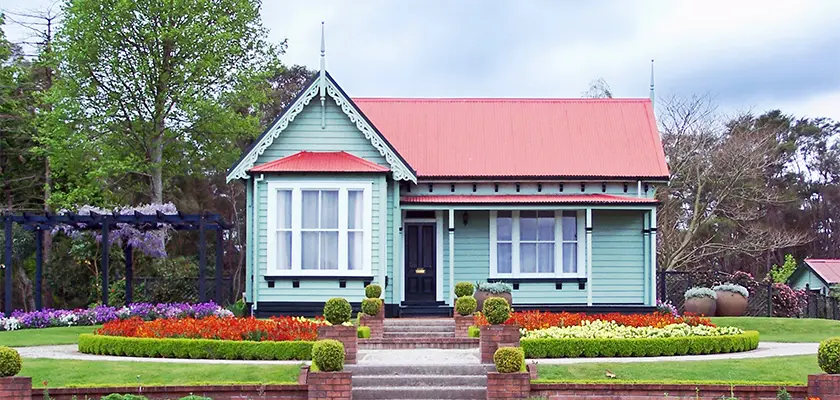
You’ve saved for the down payment. You’re pre-approved for a mortgage. The house is perfect, and you’re ready to sign on the dotted line. But there is one thing that most first-time buyers miss – the hidden costs when buying a home. These might not seem significant individually, yet they tend to add up fast and can have a bigger impact on your budget than you’d think.
In this blog, we’ll take a closer look at the often-overlooked costs, so you can plan with confidence and avoid stretching your finances thin.
Setting a price range is usually the first step when you start thinking about purchasing a home. It feels straightforward until you realize there’s a lot more tied to the total cost than just the listing amount.
A detailed budget helps you see your monthly limits clearly. It also shows how much room you truly have once your income, debts, and everyday expenses are factored in. This keeps you from stretching too far.
With a clear outline of what you can comfortably manage, it becomes easier to spot homes that fit your life rather than strain it.
Though it’s easy to focus on the big numbers, there are several quieter, under-the-radar expenses you’ll need to account for. Some appear during the purchase, some right after you move in, and others are ongoing. Let’s explore them one by one:
The day you close on your home, you are not just paying the down payment. There’s a whole lineup of fees that hit your bank account simultaneously.
Closing costs are the biggest surprise for most buyers. These fees typically run between 2% and 5% of your home’s purchase price. Say, on a $300,000 house, that’s anywhere from $6,000 to $15,000.
So, what closing costs should a homebuyer expect?
The list includes loan origination fees, appraisal charges, title insurance, and attorney fees. Each one covers a specific service or protection in the buying process. Understanding closing costs helps you budget accurately and avoid surprises at the closing table.
Here’s what gets bundled into that total:
Think of earnest money as your offer’s security deposit. You’ll typically put down 1% to 3% of the purchase price when your offer is accepted. This amount gets credited toward your closing costs or down payment. But if you walk away without a valid contract contingency, the seller gets to keep it.
Buyers who put down less than twenty percent on a conventional loan may also pay PMI. It’s a monthly add-on that reduces the lender’s risk and continues until you reach enough equity in the home.
You have closed on your home – congratulations! Now it’s time to settle in and make the space truly yours. Moving into a new place brings its own set of early expenses that many buyers overlook.
Once you start living in, small issues can show up fast. A dripping pipe, an outlet that doesn’t work, or a damaged drywall patch that needs attention are all pretty common. Even well-inspected homes can have a few surprises that only daily use reveals. So, you need to keep in mind these sudden repair bills.
Your new home may use more power, water, or gas than you are used to. Larger spaces also cost more to heat and cool. The U.S. Energy Information Administration reports that the average household spends over $2,000 a year on energy, which adds to the hidden costs when buying a home.
Relocating isn’t cheap. Movers, rental trucks, and packing supplies can chip away at your budget quickly. Even a short-distance move can cost more than expected.

Once everything is inside, you may realize you need extra furniture, new window coverings, or storage pieces. A new home often has different layouts and room sizes, so buying a few additional items is a common early expense.
After you have moved in and routines fall into place, the financial picture becomes clearer. That’s when recurring costs start showing up and stay for the long term.
Property taxes become one of your biggest yearly expenses after you have settled. They are based on your home’s assessed value, and reassessments often raise the bill. While dealing with this cost, a quick question that might cross your mind – “Where can I look up local property taxes and fees?’
The Answer: To find property taxes and related fees for your area, check the website of your county or city’s tax assessor or revenue office. These details are handled locally, not by federal or state agencies.
Homeowners insurance is another ongoing bill. Rates vary based on location, the age of the home, and local risks. If your neighborhood has an HOA, expect monthly or yearly fees to cover shared spaces, amenities, and community upkeep.
Owning a home means handling every repair. Many experts recommend setting aside 1–4% of your home’s value each year for maintenance. This includes plumbing, electrical, HVAC systems, and major appliances.
Lawns, gardens, and outdoor areas need routine care. If your home has a deck, patio, or pool, expect extra maintenance. Regular pest control is also part of keeping the property in good shape.
Unexpected breakdowns are part of homeownership. Setting aside an emergency fund helps to cover those unforeseen events.
A Helpful Rule of Thumb: How much should you set aside for hidden expenses?
Most financial advisors suggest budgeting around 1% to 4% of your home’s value each year to cover upkeep and repairs. It’s also smart to keep an emergency fund with enough to handle 3 to 6 months of essential expenses.
You can also consider a home buyers warranty to offset repair costs for system and appliance breakdown caused by normal wear and tear. It can reduce large, surprise repair bills tied to the hidden costs when buying a home.
Home warranty coverage is available in most states across the country. For instance, if you’re buying property in the Southwest, you can purchase a home warranty in New Mexico to protect your key home systems and appliances from unexpected breakdowns.

Once you settle in, the financial side of homeownership becomes clearer, especially when you understand what are the hidden costs of buying a home. A few steady habits can help you stay in control:
Estimate them before making an offer so you know your true budget. It also helps you avoid committing to a home that may stretch your finances once extra expenses are added.
Regular maintenance, seasonal checkups, and quick attention to small issues can stop minor problems from turning into expensive repairs later.
A home appliance warranty doesn’t replace savings. But it can help cut down big repair bills for important appliances and systems, so your emergency money lasts longer.
Disclaimer: The information in this article is intended to provide guidance on the proper maintenance and care of systems and appliances in the home. Not all the topics mentioned are covered by our home warranty plans. Please review your home warranty contract carefully to understand your coverage.
Our blogs and articles may link to third-party sites that offer products, services, coaches, consultants, and/or experts. Any such link is provided for reference only and not intended as an endorsement or statement that the information provided by the other party is accurate. We are not compensated for any products or services purchased from these third-party links.

Don’t wait until it’s too late! Check out our current plans and get your free quote.

Household Tips
When it comes to summertime, our refrigerators work incredibly hard. We often worry about the AC keeping the house cool but forget another appliance which keeps its contents ice cold..

Real Estate
You’ve done your research, you’ve saved up, and now you’re finally able to consider whether you’re ready to buy a home. Since most people believe they’ll eventually become a homeowner,..

Real Estate
The idea of owning a home is exciting, but the process can feel overwhelming. Before you start house hunting, it is important to understand how to buy a home the..